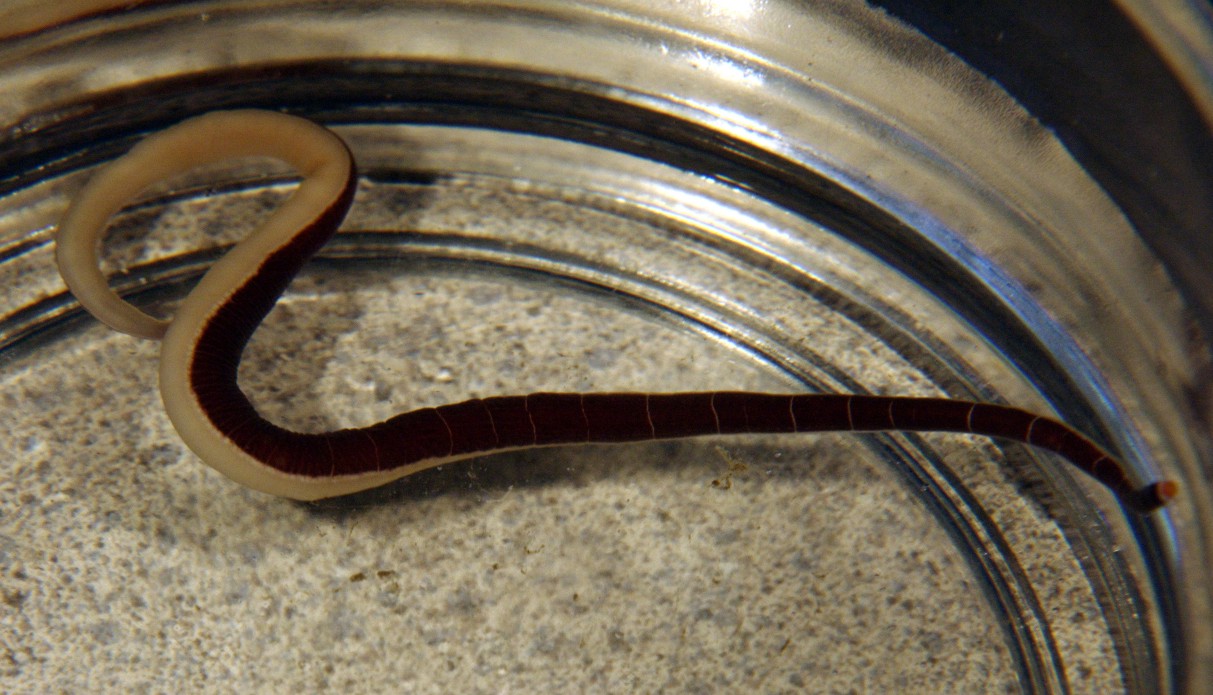Description: As in other members of Class Anopla, this Nemertean has a mouth separate from the proboscis pore and the proboscis has no stylets. Both the mouth and the proboscis are ventral on the head and posterior to the brain. As with other members of Order Heteronemertea, the head (cephalic lobe) has cephalic slits. This species has no caudal cirrus (Morris et al. says it does but is often lost). The body is soft, slender, and only slightly flattened. The head (cephalic lobe) does not flare broadly and has no eyes. Color is brown, lavender, or purple dorsally with distinct white transverse rings. The head has a white border and a prominent orange dorsal triangle. The ventral surface of the body is nearly white. Up to 50 cm long and 4 mm wide.
How to Distinguish from Similar Species: Micrura alaskensis has no transverse rings and the tip of the head is white. Micrura wilsoni has similar coloration but the head has the white border but not the orange triangle, plus its transverse white body stripes are irregularly spaced.
Geographical Range: Prince William Sound, Alaska to Monterey Bay, California
Depth Range: Intertidal and subtidal
Habitat: Usually under rocks or in eelgrass or surfgrass in relatively exposed environments.
Biology/Natural History: This species inhabits a clear mucus tube which is sometimes almost papery and is often adhered to the underside of rocks. It is usually uncommon but its strikingly beautiful colors make it memorable. The species reproduces in spring and early summer. It has extensive ability to regenerate body parts posterior to the brain. Most Micrura species eat polychaetes and other nemerteans.
Verrill was a professor at Yale University who studied
nemerteans.
| Return to: | |||
| Main Page | Alphabetic Index | Systematic Index | Glossary |
References:
Dichotomous Keys:Carlton, 2007
Flora and Fairbanks, 1966
Kozloff, 1987, 1996
General References:
Kozloff,
1993
Lamb
and Hanby, 2005
Morris
et al., 1980
O'Clair
and O'Clair, 1998
Ricketts
et al., 1985
Scientific Articles:
Web sites:
General Notes and Observations: Locations, abundances, unusual behaviors:

The head does not flare out broader than the body.
It has a white
border and a prominent orange triangle on the dorsal
side. The underside is nearly white.
Authors and Editors of Page:
Dave Cowles (2010): Created original page
CSS coding for page developed by Jonathan Cowles (2007)
Rosario Invertebrates web site provided courtesy of Walla Walla University
